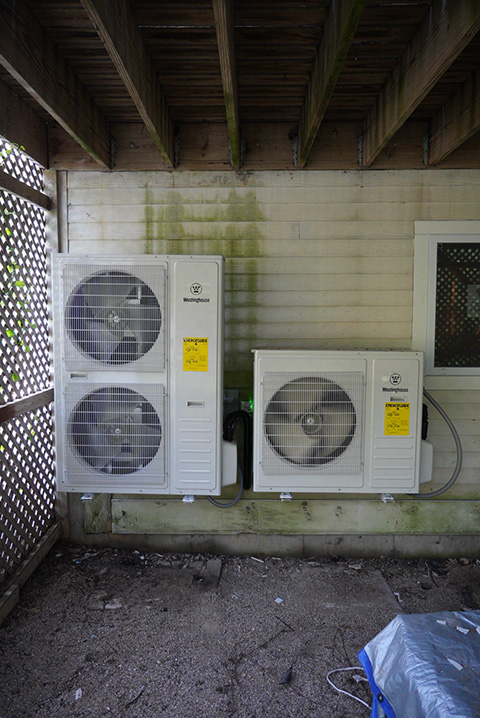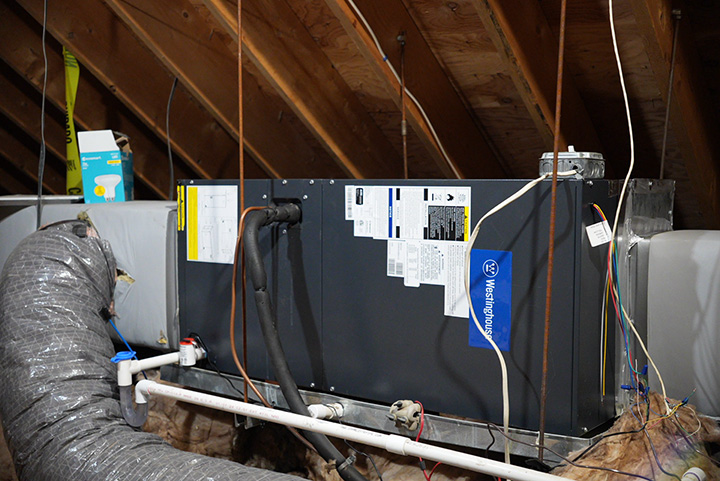Mini Split AC Systems
When it comes to keeping your home cool and comfortable, mini split AC systems are a fantastic option. These systems offer a versatile and energy-efficient solution for both residential and commercial spaces. In this article, we will explore what mini split AC systems are, how they work, their benefits, and how to choose the right one for your needs. With the increasing focus on energy conservation and personalized comfort, understanding the nuances of mini split AC systems can help you make an informed decision for your cooling needs.
Mini split systems are gaining popularity due to their adaptability and efficiency, making them suitable for a variety of architectural designs and climate conditions. As more homeowners and businesses seek ways to optimize their indoor environment while minimizing energy costs, mini split systems stand out as a practical and innovative solution. Let’s delve deeper into what makes these systems a preferred choice for many.
A mini split AC system, also known as a ductless mini split, is a type of air conditioning system that consists of two main components: an indoor unit and an outdoor unit. These units are connected by a conduit, which houses the power cable, refrigerant tubing, suction tubing, and a condensate drain. This configuration allows the system to efficiently transfer heat and cool spaces without the need for extensive ductwork.
Unlike traditional central air conditioning systems, mini split systems do not require ductwork to distribute air. This makes them an excellent choice for homes without existing ductwork or for room additions where extending existing ductwork is impractical. Furthermore, the absence of ductwork means there’s less energy loss, enhancing the system’s overall efficiency. This characteristic also makes mini split systems ideal for retrofitting older buildings where duct installation could be challenging or aesthetically displeasing.
Mini split AC systems work by transferring heat from inside your home to the outside, thereby cooling the indoor air. The indoor unit contains an evaporator coil and a fan, which cools and circulates the air. Meanwhile, the outdoor unit houses the compressor and condenser, which expel the heat absorbed from the indoor air. This seamless process is facilitated by the refrigerant, which circulates between the indoor and outdoor units, efficiently maintaining the desired temperature.
The refrigerant flows between the indoor and outdoor units, absorbing heat indoors and releasing it outdoors. This cycle continues until the desired indoor temperature is achieved. This closed-loop system ensures consistent comfort while maintaining energy efficiency. Additionally, the ability to modulate the system’s output in response to the indoor temperature further enhances the energy-saving potential of mini split of air conditioner systems.
One of the standout features of mini split systems is their zoning capability. This means you can control the temperature of individual rooms or zones independently. This feature is particularly useful in multi-story homes or buildings where different areas may have varying cooling needs. Zoning allows for personalized comfort settings, enabling each occupant to adjust the temperature to their liking without affecting the entire building’s climate.
This capability is not only convenient but also contributes to energy efficiency. By only cooling the spaces in use, mini split systems reduce unnecessary energy consumption, translating to lower utility bills. This targeted approach to cooling can also extend the lifespan of the system, as it reduces wear and tear associated with constant operation.
Mini split systems are highly energy-efficient compared to traditional central air systems. By allowing you to cool only the rooms you use, these systems reduce energy consumption and save on utility bills. Moreover, since they don’t rely on ductwork, there’s no energy loss typically associated with ducted systems. This efficiency is enhanced by the inverter technology used in many split unit air conditioner systems, which adjusts the compressor speed according to the cooling demand, further optimizing energy use.
Additionally, many mini split systems are equipped with advanced features such as programmable thermostats and eco-friendly refrigerants, which contribute to their overall energy efficiency. The environmental benefits of using less energy also align with the growing trend towards sustainable living, making mini splits a responsible choice for eco-conscious consumers.
The flexibility in installation is another significant advantage. The indoor units can be mounted on walls, ceilings, or even the floor, depending on the design and layout of the space. This versatility makes mini splits suitable for a wide range of applications, from single-room cooling to entire building systems. Whether you’re looking to cool a newly renovated attic or a sprawling open-concept living area, mini splits can be tailored to meet your specific needs.
This adaptability also extends to the outdoor units, which can be placed in discreet locations to maintain the aesthetic appeal of your property. The unobtrusive nature of the installation process means minimal disruption to your home or business during setup, making it a convenient choice for those looking to upgrade their cooling systems quickly and efficiently.
Mini split AC units are known for their quiet operation. The indoor units are designed to operate with minimal noise, making them ideal for bedrooms, offices, and other spaces where silence is essential. This is achieved through advanced design features such as variable speed compressors and sound-dampening technology, which minimize operational noise.
The quiet operation of mini splits enhances the overall comfort of your indoor environment, allowing you to work, relax, or sleep without the distraction of a noisy air conditioning system. This feature makes them particularly appealing for settings such as home offices, nurseries, and media rooms, where peace and quiet are paramount.
Since mini split systems don’t use ducts, there is less chance for allergens and dust to circulate throughout your home. Many models also come with advanced filtration options, helping to improve indoor air quality further. These filters can trap dust, pollen, and other airborne particles, contributing to a healthier living environment.
Improved air quality is particularly beneficial for individuals with allergies or respiratory conditions, as it reduces exposure to potential irritants. Additionally, the regular maintenance of filters ensures that the system continues to operate efficiently, providing clean and fresh air throughout your home or office.
The first step in selecting a mini split system is determining the right size for your space. The cooling capacity of mini split units is measured in BTUs (British Thermal Units). The larger the area, the higher the BTUs required. It’s important to get the sizing right to ensure efficient cooling and avoid unnecessary energy consumption. Consulting with an HVAC professional can help you accurately assess the cooling needs of your space based on factors such as room size, insulation, and climate.
Proper sizing not only ensures optimal performance but also enhances the longevity of the system. An undersized unit may struggle to maintain the desired temperature, leading to increased wear and tear, while an oversized unit can lead to humidity issues and unnecessary energy use. Therefore, accurate sizing is crucial for achieving the best results.
Consider how many rooms or zones you need to cool. Mini split systems can be configured with multiple indoor units connected to a single outdoor unit, providing customized cooling solutions for different areas of your home. This multi-zone capability allows for precise temperature control in various spaces, accommodating diverse preferences and usage patterns.
When planning the number of zones, think about the layout and function of your home. For example, a family might prioritize cooling in common areas like the living room and kitchen, while also ensuring comfortable temperatures in bedrooms. By strategically placing indoor units, you can create a tailored climate control system that meets your household’s unique needs.
Look for additional features that enhance comfort and convenience, such as programmable timers, remote control, and smart home compatibility. Some advanced models also offer heating capabilities, making them a year-round climate control solution. Smart features allow for remote management of your system via smartphones or voice assistants, providing flexibility and control over your indoor environment.
The inclusion of heating functions makes mini splits an all-in-one solution for climate control, eliminating the need for separate heating and cooling systems. When selecting a model, consider which features align with your lifestyle and preferences, ensuring maximum comfort and convenience.
The cost of a mini split system can vary based on the brand, features, and installation complexity. While the initial cost may be higher than a traditional window unit, the long-term energy savings and increased comfort make it a worthwhile investment. Additionally, the potential for rebates and incentives for energy-efficient systems can help offset the initial expense.
When evaluating mini split cost, consider not only the upfront price but also the potential savings on energy bills over time. A well-chosen mini split system can significantly reduce operating costs, providing financial benefits alongside improved comfort and efficiency.
While some DIY enthusiasts may be tempted to install a mini split system themselves, it’s advisable to hire a professional HVAC technician. Proper installation ensures optimal performance and efficiency and helps avoid potential issues down the line. A professional installer can also provide valuable insights into system placement and configuration, maximizing your system’s effectiveness.
Professional installation includes precise calibration of the system and verification of all connections, ensuring safe and reliable operation. This expertise is crucial for maintaining the warranty and prolonging the lifespan of your investment, providing peace of mind and long-term satisfaction.
Regular maintenance is crucial to keeping your mini split system running efficiently. This includes cleaning or replacing filters, checking the refrigerant levels, and ensuring the outdoor unit is free from debris. Many HVAC companies offer maintenance plans to keep your system in top condition. These plans often include scheduled inspections and tune-ups, helping to prevent issues before they arise.
Routine maintenance not only ensures efficient operation but also extends the life of your system. By addressing minor issues early, you can avoid costly repairs and maintain a comfortable indoor environment year-round. Investing in regular upkeep is a smart way to protect your investment and ensure consistent performance.
Mini split AC systems provide an efficient, flexible, and quiet solution for cooling your home or office. With their zoning capabilities and energy-saving features, they offer a modern alternative to traditional air conditioning methods. By understanding how these systems work and what to consider when choosing one, you can enjoy a comfortable indoor environment tailored to your specific needs.



